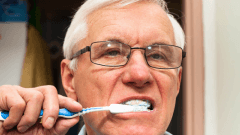Best Core Routine to Improve Walking Post-stroke
Core stability forms the basis for efficient arm and leg movement, particularly in the context of neurologic recovery. Exercises targeting the core help stabilize the trunk, providing a solid foundation for movement.
The core consists of muscles surrounding the trunk that maintain vertical alignment and stability. Neglecting these muscles can impede efficient movement, particularly in the later stages of recovery.
Exercises are organized from easier to more challenging, transitioning from laying to sitting, standing, and ultimately kneeling positions. Each stage aids in building strength and stability required for more advanced movements.
- Rolling exercises emphasize core engagement without using arms for leverage.
- Isometric exercises with gym balls improve core stability, involving squeezing and maintaining control.
Using tools like a sandbag for trunk rotations expands the range of motion and strengthens core muscles further.
- Standing exercises enhance functional stability and are crucial before progressing to kneeling.
- Kneeling exercises, such as using bands and balls, further challenge stability and core strength.
Building core strength is foundational for neurologic recovery. By adhering to a structured exercise progression, individuals can enhance their recovery at different stages, contributing to improved mobility and functionality.
From Around The Web
Wellness Inbox is a blog & weekly newsletter that curates trending news and products related to health and wellness from around the web. We also gather content from various sources, including leading health professionals, and deliver it directly to you.
Please note that we may receive compensation if you purchase any products featured in our newsletter. Wellness Inbox is not affiliated with, nor does it endorse, any health professionals whose content may appear in our newsletter. The information provided is for general informational purposes only and should not be considered medical advice.
The information provided is not intended to replace professional medical advice, diagnosis, or treatment. All content, including text, graphics, images, and information available is for general informational purposes only. We do not guarantee the accuracy or completeness of any information presented and assume no liability for any errors or omissions. The content is subject to change without notice. We encourage you to verify any information with other reliable sources and consult your physician regarding any medical conditions or treatments.







